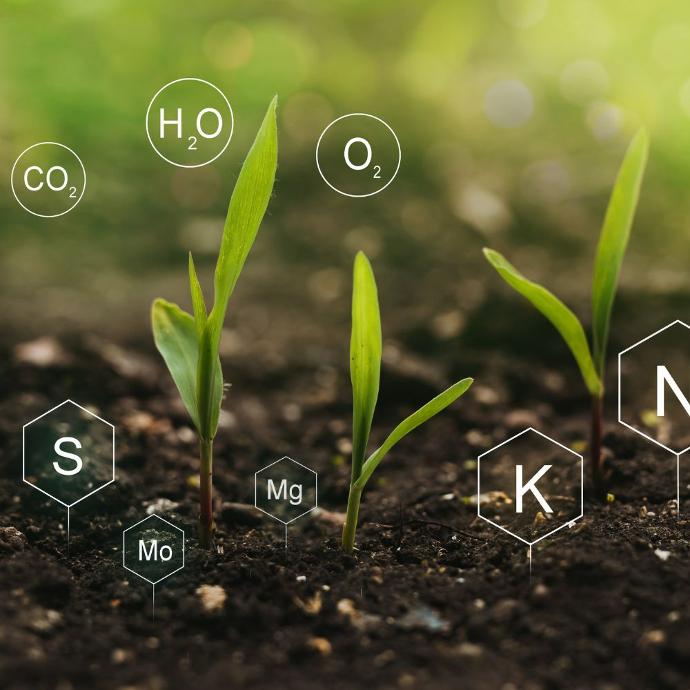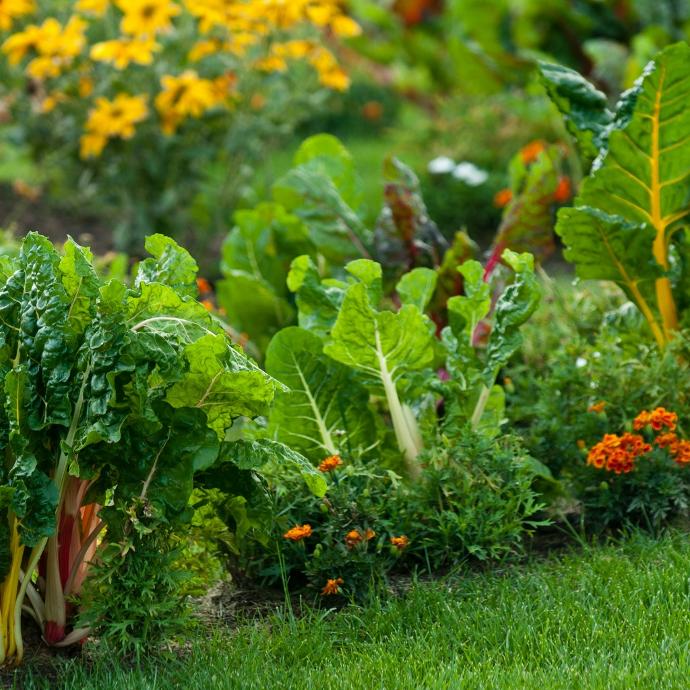Welcome to Daisy's Garden Supplies blog! Growing your own vegetable garden is not just a hobby - it's a journey that takes you from the practical aspects of gardening to the satisfaction of cultivating your own food. Today, we're diving into a comprehensive guide on preparing your garden soil to nurture thriving vegetables.
Where to Grow Vegetables and What Soil to Use:
Selecting the Ideal Location for Your Vegetable Garden The initial and most crucial step in setting up a thriving vegetable garden is pinpointing the perfect location. Key features of an ideal location for your garden are primarily determined by the amount of sunlight exposure and the overall orientation of your garden. Vegetables are sun-loving plants, and as such, your chosen spot should allow for at least 6 hours of direct sunlight each day. The location should also offer protection from high winds and excessive rain, while also providing easy access for watering and maintenance. Considering these factors will ensure your vegetable garden flourishes year-round.
Choosing the Right Soil: The second fundamental step involves selecting the appropriate soil for your vegetable garden. Soil is the lifeline of your garden, providing necessary nutrients, water, and air to your vegetables. At Daisy's Garden Supplies, we strongly recommend our specially formulated Daisy's Vegie Mix.
Daisy's Vegie Mix is a potent, nutrient-dense soil blend that has been carefully designed to cater to the unique needs of vegetable plants. It incorporates a base of budget soil, which is then significantly enriched with mushroom compost, other composts, and manures. This mixture results in a fertile soil that serves as an ideal substrate for vegetable gardens.
Key characteristics of Daisy's Vegie Mix that make it an excellent choice for growing vegetables:

Nutrient-Rich:
- The mix is packed with essential nutrients, thanks to the inclusion of mushroom compost and manures. These components help fuel vigorous plant growth and ensure bountiful harvests.

Ideal Structure:
- Daisy's Vegie Mix facilitates effective water absorption and root penetration due to its ideal structure. The well-aerated soil mix promotes healthy root development, which is critical for vegetable growth.

Soil Fertility:
- Using Daisy's Vegie Mix is a surefire way to enhance your garden's soil fertility. It increases the soil's organic matter content, improving water and nutrient retention. Furthermore, it encourages beneficial microbial activity, leading to a healthy and productive garden.
Versatility:
Whether you're amending your existing garden soil or creating a new bed, Daisy's Vegie Mix provides an optimal environment for growing a wide variety of vegetables.

Constructing a Veggie Garden: Bed Types, Size, and Layout
Starting a vegetable garden requires thoughtful planning and arrangement. Firstly, consider the type of vegetable bed that suits your needs. Beds can either be at soil level or raised.
Soil-level Beds: This is a straightforward approach where you simply mark out the edges with string tied between pegs, then prepare the ground within. Over time, the soil level in these beds will rise due to the addition of organic matter and compaction of surrounding paths.
Edged and Raised Beds: These beds are defined with edging that separates the growing area from the paths, normally using a Timber Sleepers. Raised beds improve drainage and warm up earlier in spring. They also keep children and pets away from the growing area. However, building these beds involves some initial cost and effort.
Now, let's discuss planning the size and orientation of your vegetable beds:
Bed Size: To avoid overstretching, aim for a bed width of 90-120cm, which is comfortable to reach. Beds of equal width make it easier to move covers and cloches from one bed to another as needed. In terms of length, consider how far you are willing to walk to get around to the other side. A maximum length of 3m is typically suitable for most people.
Bed Orientation: Place your beds in the sunniest part of the garden, away from frost pockets. Be conscious of the direction of the midday sun and potential shade from taller plants. Our Garden Planner can help you plan the layout of your beds, optimising sunlight exposure.
Now, consider the design of the paths that separate your vegetable beds:
Paths: These should be at least 60cm wide to allow for comfortable access. You can leave paths to grass if easily mowed. For a low-maintenance solution, consider spreading a mulch or something from our Paths and Toppings range, all over weed-suppressing membrane. Alternatively, choose a permanent path surface, such as Pavers and Steppers.
Lastly, the placement of vegetables within the beds is of utmost importance:
Vegetable Positioning: Positioning your crops wisely can significantly boost your garden's yield. Take into consideration factors like each plant's sunlight needs, size, growth pattern, and water requirements. For instance, tender plants like tomatoes and capsicum need the warmest, sunniest part of the plot. On the other hand, climbers like beans and peas should be positioned where they won't shade lower-growing vegetables.
Is Growing Your Own Vegetables Cheaper Than Buying?
With the current cost of living crisis, more and more people are searching for ways to save money without sacrificing quality of life. One fantastic solution to this challenge is cultivating your own vegetable garden. While the initial investment in setting up a garden and purchasing seeds or seedlings may seem daunting, the economic benefits that emerge over time are substantial.
In addition to the monetary advantages, the non-financial benefits are also noteworthy. The freshness and flavor of homegrown produce surpass store-bought vegetables, enriching your meals and boosting your health. The gardening process itself provides physical exercise and can be a relaxing and rewarding pastime, adding to your overall well-being.
We delve deeper into this topic in our latest article, "Is Growing Your Own Vegetables Cheaper Than Buying?", where we analyse the cost-effectiveness of vegetable gardening in the context of the current economic climate. We believe you'll find the insights valuable and inspiring as you consider the merits of starting your own vegetable garden.

How to Grow the Vegetables Step by Step:
Here we are at the thrilling juncture: the planting of your vegetables! While the method might differ slightly depending on the type of vegetable, below is a general step-by-step guide for most veggies:
- Soil Preparation: Start by eliminating any weeds or extraneous debris from the area. Then, enrich the soil by incorporating compost or other organic matter to enhance its fertility and texture.
- Seed/Seedling Planting: Plant your seeds or seedlings in accordance with the instructions provided on the seed packets or plant labels. Make sure to allot ample space for each plant's growth.
- Consistent Watering: Young plants necessitate regular hydration. However, be cautious not to drench them, as excessive water can lead to root rot.
- Weed Control and Mulching: Maintain a weed-free garden and apply a layer of mulch. Mulch aids in retaining soil moisture and acts as a barrier against weed growth.
- Timely Harvesting: Generally, vegetables exhibit the best flavours when harvested young. In addition, frequent harvesting encourages the plants to produce more.
Now the setup is slightly varied depending on the type of veggies you are growing so here is a guide for each:
Depending on the type of vegetables you choose to grow, your planting and care process may vary. Here is a detailed guide for each category of veggies:
- Tender Plants: Plants like tomatoes and capsicum generally crave the warmest, sunniest parts of your garden. Ensure to place these in the sunniest location of your garden setup.
- Sprawlers: For sprawling plants like squash, position them along the edges of the beds to prevent them from overshadowing their neighbors.
- Climbers: Plants that grow tall, such as beans and peas, need to be positioned so they won’t cast shade on shorter vegetables. Place them as far as possible from the sun to avoid casting shadows. In hot climates, the shade they create can actually be beneficial for growing cool-season crops like lettuce and spinach.
- Quick-Access Crops: For plants that are frequently harvested and don’t require crop rotation, such as herbs and salad leaves, position them in the beds nearest to the kitchen for easy access.
- Pollination and Companion Plants: Keep in mind the pollination requirements of certain plants. For instance, corn needs to be grown in blocks rather than rows, as these plants are wind-pollinated. Integrating companion plants like calendula can boost pollination and attract beneficial insects to your garden.
- Thirsty Plants: Plants with high water needs, like salad leaves, might need regular watering. Cluster these plants together in a damper part of the garden or where irrigation can be easily supplied.
Now, let's delve into some specific vegetable types:
Leafy Greens: These are some of the most versatile and healthy veggies for you to grow. Lettuce, for instance, is a cool-season veggie but can grow all year round. It is best to plant your seedlings in partially shaded spots during the hot summer months.
Root Vegetables: Radishes, turnips, and carrots grow fast and are perfect if you want a quick win in your garden. Carrots are best planted in late summer to early autumn and grown over winter.
Cucumbers: Cucumbers love the summer heat and dislike cool, wet weather. They need good drainage and fertile soil. Remember to provide a trellis or strings for cucumbers to climb on.
Broccoli: Broccoli is an excellent vegetable to grow during cooler months. It's best sown in summer or autumn, and the seeds are best sown in starter pots or trays and then transferred when they are about 7 cm tall.
Peas/Snow Peas: These are easy to grow and a great starter plant for kids or novice gardeners. Peas are a cool-weather crop and should not be planted in the summer. They make excellent companion plants for other veggies.
Strawberries: Growing your own strawberries is a treat, but you'll have to get to them before the pests do. They make great hanging basket or balcony plants, and if you opt for "everbearing" varieties, you'll get a longer period of production.
Wrap Up:
Growing your own vegetable garden is a rewarding venture that offers numerous benefits. Not only do you get fresh, tasty produce, but the process itself is therapeutic and fulfilling. Start with good soil, choose the right location, prepare the garden, plant, and then watch as your garden rewards you with fresh, home-grown vegetables. Happy gardening from all of us at Daisy's Garden Supplies!
About the Authors

Harley Thompson
Harley is a second-generation journalist with a passion for gardening and a keen eye for detail. Currently studying a double degree of Commerce and International relations at Monash University, Harley loves learning new things. He specialises in creating engaging content about garden advice, using experience in store, with our team and customers. His writing blends his academic knowledge with practical experience, offering informative and inspiring articles.

Greg Fitzgerald
Greg Fitzgerald is a qualified horticulturalist with more than 30 years in the industry and 16 years at Daisy's Garden Supplies. He manages production and procurement for all our products, ensuring high-quality gardens and landscapes for our customers. His vast experience and qualification in horticulture make him a key asset to Daisy's. He offers valuable insights and a wealth of knowledge in terms of mulches, soils, pebbles and rocks, composts and many other products.